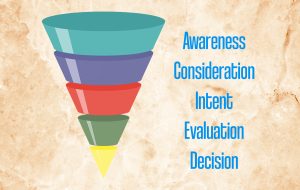Google POAS vs ROAS campaigns: Understanding the Difference

Have you ever wondered about the distinction between Profit-On-Ad-Spend (POAS) and Return-On-Ad-Spend (ROAS) campaigns when it comes to Google Search campaigns? Understanding the variance between these two strategies can be pivotal in optimizing your online advertising efforts for performance.
Understanding Campaign Objectives
Let’s look into the fundamental differences between Profit-On-Ad-Spend (POAS) and Return-On-Ad-Spend (ROAS) campaigns.
Defining POAS Campaigns
Profit-On-Ad-Spend (POAS) campaigns focus on maximizing the profitability of each ad campaign. The primary goal of a POAS campaign is to ensure that the revenue generated from the ads surpasses the cost spent on those advertisements. Essentially, the aim here is not just to drive sales or increase visibility but to optimize every dollar spent on advertising to generate a positive return on investment (ROI) with all attributing expenses being considered.
Exploring ROAS Campaigns
On the other hand, Return-On-Ad-Spend (ROAS) campaigns emphasize the efficiency of ad spend in relation to revenue generated. Unlike POAS campaigns that prioritize overall profitability, ROAS campaigns are more concerned with measuring how much revenue is generated for every dollar spent on advertising. The key focus here is to maximize the revenue generated relative to the cost of advertising, aiming to achieve a specific target ROI ratio.
Both POAS and ROAS campaigns play a vital role in the digital marketing landscape, offering distinct approaches to achieving advertising objectives. By understanding the differences between these two strategies, advertisers can tailor their campaigns to align with their specific goals and measure success based on the desired outcomes.
Key Differences Between POAS and ROAS Campaigns
Understanding the disparities between POAS (Profit Over Ad Spend) and ROAS (Return On Ad Spend) campaigns is crucial for optimizing your advertising efforts effectively. Let’s dive into the distinctive aspects that set these two campaign types apart.
Conversion Tracking Methods:
POAS campaigns prioritize actual profitability by evaluating the net profit generated from each conversion. This means considering not just revenue but also the associated costs like product sourcing and fulfillment. On the other hand, ROAS campaigns focus solely on revenue generated per dollar spent on advertising, overlooking the true profitability of each conversion.
Budget Allocation Strategies:
When it comes to budget allocation, POAS campaigns are more concerned with maximizing profit margins. This often involves allocating more budget towards higher-margin products or scaling back on advertising spend for low-profit items. In contrast, ROAS campaigns aim to increase revenue without a deep consideration of profitability, leading to a more revenue-centric budget distribution approach.
Optimization Techniques:
Optimization strategies for POAS campaigns revolve around maximizing profits by fine-tuning ad targeting, adjusting product pricing, and optimizing sales funnels to enhance overall profitability. In comparison, ROAS campaigns concentrate on maximizing revenue generation per advertising dollar, emphasizing scaling ad spend on high-performing campaigns to drive more sales.
Campaign Examples POAS vs. ROAS:
| Campaign A | Campaign B | Notes | |
|---|---|---|---|
| Ad Spend | $2,000 | $4,000 | =amount spent on ads |
| Revenue | $12,000 | $14,000 | =total revenue generated |
| Purchasing Cost | $5,000 | $2,000 | =cost associated with buying an item or service |
| Sales Cost | $4,000 | $3,000 | =cost involved in directly producing goods/services |
| Profit | $1,000 | $5,000 | =’Revenue’-‘Ad Spend’-‘Purchasing Cost’-‘Sales Cost’ |
| ROAS | 6.0 | 3.5 | =’Revenue’/'”Ad Spend’ |
| POAS | 0.5 | 1.25 | =’Profit’/’Ad Spend’ |
In this comparison, while Campaign A outperforms Campaign B in terms of ROAS with a higher revenue generated per ad spend, Campaign B proves to be more profitable when considering purchasing and sales costs, showcasing the significance of understanding both POAS and ROAS metrics for comprehensive campaign evaluation.
Implementing the Right Campaign for Your Goals
When it comes to selecting the right campaign strategy for your marketing objectives, understanding the factors that influence your decision is crucial. Whether you opt for a Profit-On-Ad-Spend (POAS) or Return-On-Ad-Spend (ROAS) campaign, your choice should align with your specific goals and desired outcomes.
Business Objectives:
Begin by analyzing your business goals. If your primary focus is to increase overall sales revenue, a ROAS campaign might be more suitable as it directly ties ad spending to revenue generated. On the other hand, if you want to understand profitability, a POAS campaign could provide more granular insights.
Best Practices for Success:
- Tracking Conversions: Implement robust tracking mechanisms to accurately measure the success of your campaigns. Set up conversion tracking tools and analyze the data regularly to optimize your ad performance.
- Target Audience Segmentation: Tailor your campaigns to specific audience segments to maximize relevance and engagement. By understanding your target audience’s preferences and behaviors, you can create more personalized and effective ad experiences.
- Continuous Testing and Optimization: Don’t set and forget your campaigns. Regularly test different ad creatives, messaging, and targeting strategies to identify what resonates best with your audience. Use the data insights to refine your campaigns for better results.
By considering these factors and following the best practices outlined above, you can implement the right campaign strategy — whether POAS or ROAS — to achieve your marketing goals effectively.
Takeaways
Understanding the difference between Google POAS and ROAS campaigns is crucial for maximizing your advertising efforts.
POAS focuses on measuring profitability, providing insights into which ads are driving actual profit all costs considered. On the other hand, ROAS looks at the revenue return on ad spend, helping you assess the revenue volume driven by of your campaigns.
By grasping the distinct goals and metrics of each approach, you can tailor your strategies to achieve optimal results. Incorporating both POAS and ROAS tactics into your marketing arsenal can lead to a more comprehensive understanding of your advertising impact and ultimately drive greater success for your business.










